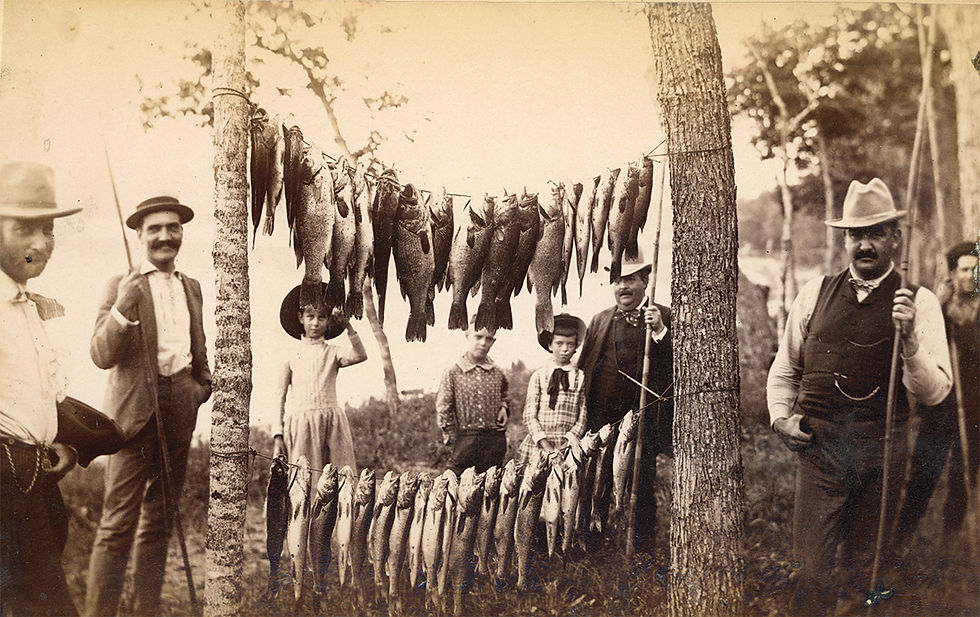German influence heavy in Stearns County, Melrose
- Sr Perspective

- Apr 1, 2013
- 3 min read
Although it is no longer strictly true, people of German descent once made up by far the largest ethnic group in Stearns County and the Melrose area in particular. To understand why so many Germans wound up there, it is necessary to look at the political and economic situation in 19th century Europe, which could best be described as “unsettled.” Originally there was no country called “Germany,” just a collection of small princedoms that differed in dialects, social customs and religions. Even when Germany was unified in the 1870s, its boundaries continued to shift.
Germans had been coming to the U.S. since colonial times, but the majority arrived between the 1830s and the 1870s. Their reasons varied. Germany, like all of Europe, had abandoned the feudal system, and peasants had to rent their land for cash. The oldest (or in one area, the youngest) son inherited the family farm, leaving his siblings landless, and farms were frequently not big enough to support more than one family. The industrial revolution was taking off, but Germany lagged behind some countries. The elimination of cottage industries drove many to overcrowded cities to find employment that might not exist. Taxes increased along with the population. Political revolt was always in the air. Many had no hope for future prospects or even a decent salary and no sense of country loyalty.
Religious dissent is also frequently given as a reason for immigration, since Lutherans were the majority in the north, where most Stearns County settlers originated, and Catholics in the south. But oddly enough, there are very few stories about religious persecution among Stearns immigrants. Mostly they dealt with better opportunities for their children, free land, or avoidance of military duty, in the days when “draft dodger” was not a bad word but a sensible lifestyle choice. (This writer’s German ancestors came to the U.S. for that very reason, and nobody ever thought the less of them, especially since they founded a very fine brewery.) In the 1830s, some 150,000 German immigrants arrived and nearly 450,000 in the 1840s. By 1892 Stearns County had the highest density of German-American Catholic parishes of any settlement in the country.
And who persuaded them to come? The Northern Pacific Railway for one, which wanted to sell off some of its extra land grants, and various settlement and colonization societies, both in Germany and the U.S. Minnesota Territory, for example, had for a while a Commissioner of Emigration. Working from New York, he advertised in pamphlets and immigrant newspapers, and wasn’t above buttonholing new arrivals from Germany as they came down the gangplank, telling them of the wonders of Minnesota.
Also very persuasive were the so-called “America letters” which immigrants wrote to their friends and families back home, urging them to join them in their new homeland.
But the majority of Stearns County arrivals were lured by Fr. Francis Xavier Pierz, a Slovenian priest who came as a missionary to the Native Americans in 1854. He reported to his fellow European Catholics about the wonderful water, soil and climate of central Minnesota. He said that in three winters he had not seen more than a foot of snow, and farmers worked in shirtsleeves the year round. Many took him at his word, packed their trunks (into which one hopes they thought to put warm clothing) and sailed away. It is also to be hoped they were not “freethinkers, red republicans, atheists or agitators,” because Fr. Pierz would have none of those in his “German Catholic paradise.”
These people tended to be well educated or at least literate, because education was stressed in Germany. The family unit, social customs and religious beliefs united them, and they tended to settle near others from their town or state and to intermarry within these groups.
They found their new home similar to their old in climate and terrain. They conducted their school classes and church services in German, often fiercely resisting attempts to switch to English. Most became farmers. They had no time to learn English and felt no need to do so. They had no use for assimilation and Americanization like their Irish neighbors.
In Melrose they founded their own church, St. Boniface, and there was much muttering when it was forced to merge with the Irish Church, St. Patrick’s, in 1958. It took World War I to get German-Americans to declare that they were true Americans. By 1921, church council minutes, school classes and the like were being written and taught in English, and the Germans were beginning to be truly assimilated in Stearns County.




Comments